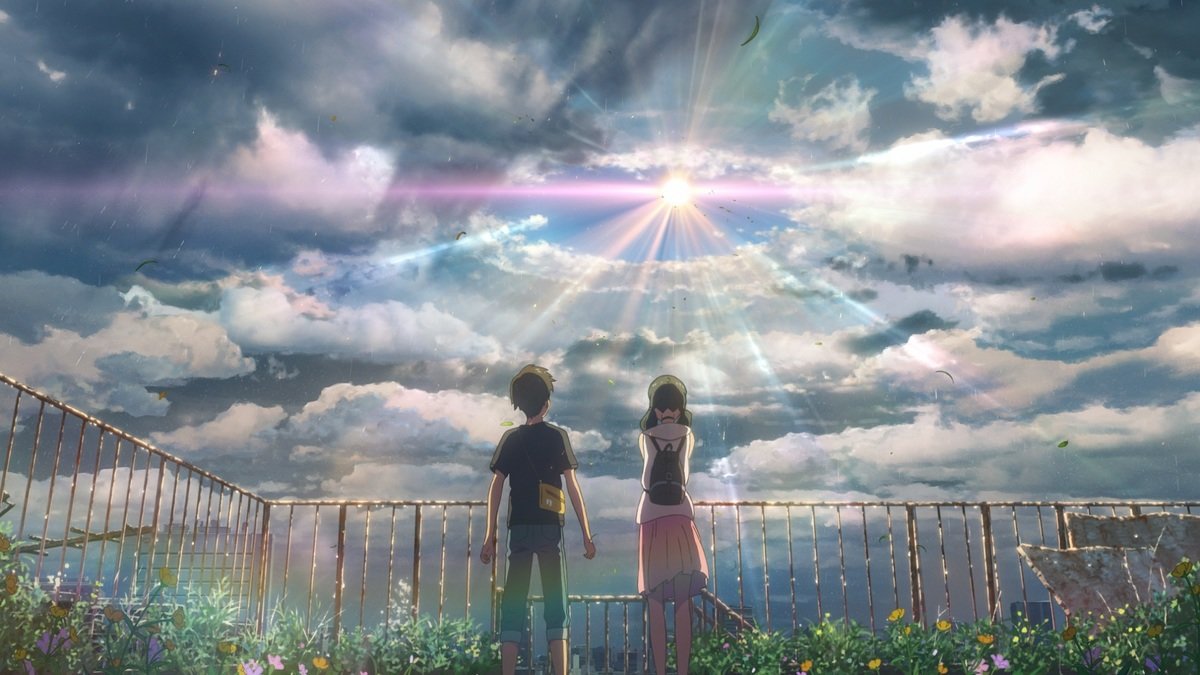

Weathering with You is director Makoto Shinkai’s follow up to the 2016 smash hit Your Name, to date the highest grossing anime film in history.
With expectations understandably (and probably unreasonably) high, this feature seemed almost fated from the start to disappoint. It does, and yet there is still so much like.
Weathering with You tells the story of two contemporary Tokyo teenagers in a relentlessly rain-drenched world. One of teens, a so-called “sunshine girl,” is supernaturally endowed with the ability to pray away the rain and replace it with little, fleeting pockets of sunshine. She literally has the power to momentarily brighten up the world, but the gift comes at a cost. With its every exercise she surrenders a little more of her terrestrial existence for another kind of life amongst spirit-like creatures in “the sky.”
This unabashedly high concept promises big but only gets half-baked. Like the proverbial experiment in the kitchen pulled from the oven too soon, the film gives us something that looks great on the surface and has lots of good inside, even if it’s all a rather gooey mess.
Apparently in Japan a person can be as much a “rain boy” as a “sunshine girl,” and in literalizing the latter the film’s central conceit seems designed to advance a pair of propositions: deference to the common good might help society, but it can also cost us dearly. More specifically, the perspective put forward seems to be that as much as climate change threatens our shared future, so too, somehow, does utterly sacrificing our individual desires.
If, as reason suggests, a balance must therefore be struck between these competing imperatives, the film does little to instruct us how. Rather, what it does is remind us that our individual wishes, personal relationships, and some sort of pseudo-mystical connection to “the sky” (under-defined in the film) are, in fact, indispensable pieces in that vital puzzle – no matter how insignificant these may seem when compared to the large-scale crises that threaten us.
In a Western society whose members are often more bent toward individual prerogatives rather than the common good, this sounds like preaching to the choir, but I daresay there are some even on this side of the Pacific for whom this will come as a welcome reminder.
So much for the story. Now let us consider the animation.
Simply put, it is beautiful. Almost overwhelmingly.
Even when considered as just another instance of cinematic animation in general, like the best of its brethren, there can be discerned in the very fabric of this feature a kind of attentiveness akin to reverence.
Unlike photographic cinema, where many of the details that make it to the screen – an arrangement of rustling leaves, the haircut of a passerby, the almost unnoticeable dent in an otherwise perfectly circular doorknob – appear as if by accident.
Not so with animation.
In this medium, everything we see is there because somebody means it to be. Every moving leaf, every hair out of place, every blemish or raindrop is there because an animator noticed, considered, and decided it was worth that metaphorical drop of his or her finite effort and time on this earth to replicate it for us.
Such astonishing attentiveness might suggest to the mind some shadow of the character of the divine mind. Not one sparrow, not one hair on your head, we are told, stays there or falls to the ground apart from the will of the Father.
In other words, none of this world around us is here by accident. It is noticed, considered, costly.
So even if as a story Weathering with You leaves a lot to be desired, as animation what it attends to, interprets, and gives back for our consideration is almost overwhelming good.
At a minimum, if there is indeed a kind of evidence of divine love in the fall of every raindrop, this film certainly gives us plenty of them.
(Originally published in The B.C. Catholic)
